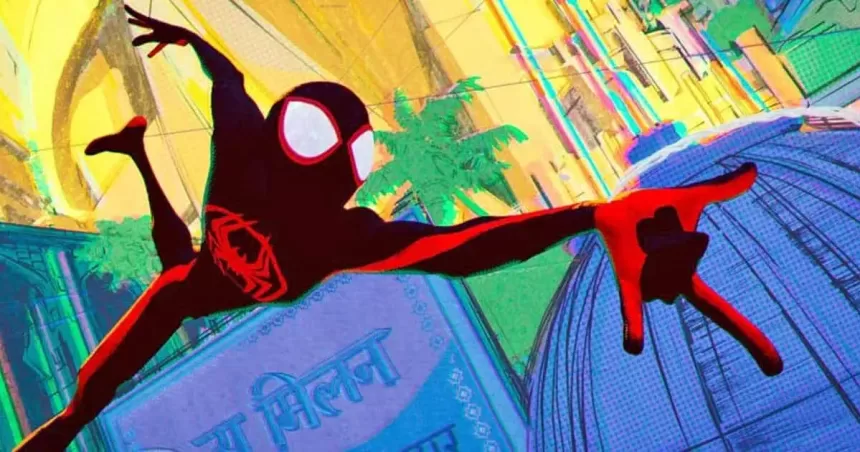“Spider-Man: Across the Spider-Verse” has swung into theaters as the summer’s most anticipated and exceptional sequel. Drawing comparisons to legendary films like “The Empire Strikes Back” and “The Godfather Part II,” this animated masterpiece not only lives up to its predecessor but also surpasses it.
With the challenge of following a critically acclaimed first installment that earned over $380 million worldwide and won an Academy Award for Best Animated Feature, this film proves that the Spider-Man franchise still has much to offer. Let’s delve into the main plot and the reasons why this movie is more than just a superhero flick.
Plot Synopsis:
The story revolves around Miles Morales, a Brooklyn teenager navigating the challenges of high school while embracing his secret identity as the friendly neighborhood Spider-Man. Yearning for his Spider-Buddies from other universes, Miles finds himself torn between his parents’ guidance and his own aspirations. In a parallel universe, Gwen Stacy mourns the loss of her best friend, Peter Parker, while her cop father seeks revenge against Spider-Woman, unaware that she is his own daughter.
Gwen receives an opportunity to assist other Spider-People from a retro-styled, motorcycle-riding, pregnant Black Spider-Woman. Joined by her friend Miles, they face off against The Spot, a cow-printed villain with interdimensional portals, who is determined to bring down Spider-Man. As they chase The Spot through various dimensions, they gather a team of Spider-People and ultimately reach the Spider-Society, led by Miguel O’Hara.
The Spider-Society is a rich tapestry of Easter eggs, featuring iconic sketches, diverse art styles, and playful variants such as Spider-Rex—a hilarious blend of Spider-Man and a Tyrannosaurus Rex. This film encapsulates the essence of the Spider-Man franchise, effortlessly balancing whimsicality and tragedy.
Animation as Art:
“Spider-Man: Across the Spider-Verse” stands out as a true work of art, utilizing distinct animation styles to breathe life into each dimension. Gwen Stacy’s world is depicted with impressionistic watercolors, featuring soft, sweeping strokes that create a dreamlike atmosphere.
Conversely, Spider-Man India’s realm, Mumbattan, bursts with vibrant colors and dynamic movement, captivating viewers with its energy. By immersing the audience in visually distinct dimensions, the film showcases the depth and uniqueness of each Spider-Person, ensuring they feel like fully developed characters rather than mere sidekicks.
A Refreshing Alternative to Marvel:
Unlike the ever-expanding Marvel Cinematic Universe, “Spider-Man: Across the Spider-Verse” offers a self-contained story that doesn’t require prior knowledge of the franchise. The movie begins with a concise recap, allowing newcomers to jump right into the action.
In a time when keeping up with the 32 Marvel superhero movies can feel overwhelming, this film provides a welcoming experience for casual viewers. It combines emotional depth, progressive themes, and awe-inspiring visuals without relying solely on computer-generated effects. As a result, it appeals to a broad audience, evoking a sense of inclusivity.
“Spider-Man: Across the Spider-Verse” is an exhilarating, touching, and creative film that is destined for success at the Academy Awards. With its well-crafted storyline, captivating animation styles, and a cast of beloved characters, it has emerged as the summer’s first major hit.
Audiences will be enthralled by this extraordinary sequel, which continues to redefine what it means to be a superhero in the cinematic realm. Directed by Joaquim Dos Santos, Kemp Powers, and Justin K. Thompson, and featuring the talents of Shameik Moore, Hailee Steinfeld, and Oscar Isaac, this film is an absolute must-watch for fans of all ages.





